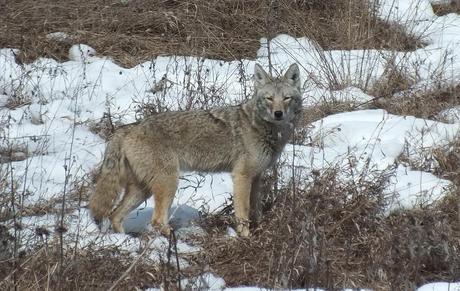
A visit to the Claireville Conservation Area this past Sunday turned up a rare sighting for Bob and I. Before we barely set off from the parking lot, fellow visitors to the park were drawing our attention to an Eastern Coyote emerging from the edge of the bush.
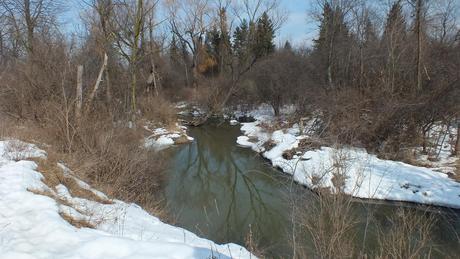
Claireville Conservation Area is an 848-hectare parcel of conservation land located on the west branch of the Humber River on the edge of Toronto, Ontario. When we visited, the ice had already melted from the surface of the various waterways given the warmer spring temperatures over the past week or so.
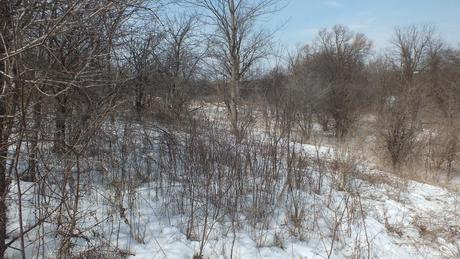
The landscape of the park is diverse and includes numerous creeks and ravines, flat plains, and rolling hills that all combine to enrich the forested landscape. It seemed quite wild in the isolation of some areas.
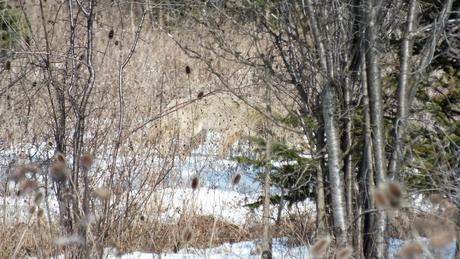
Can you spot the coyote in this photograph? The color of its fur blends amazingly well with the tawny shades of the dead grass and bare branches.
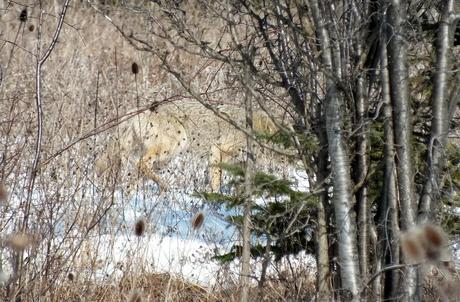
In this photo, the contours of the coyote’s body can be distinguished a little more easily. Tracking the coyote’s movements through my camera lens was a challenge because it blended in so well with the landscape.
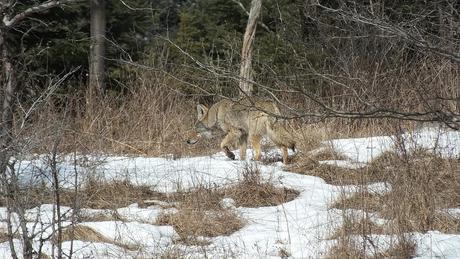
Claireville Conservation Area was abuzz with other like-minded people – those wanting to get out and enjoy the very warm and sunny day. Many visitors had brought along their dogs, which didn’t go unnoticed by the coyote.

When a couple of the dogs caught sight of the coyote, they started barking madly. The coyote then headed off in the opposite direction, mounting a small ridge topped with a stand of evergreen trees.
In this video that Bob filmed, the dogs are barking frantically, which gains the attention of the coyote.
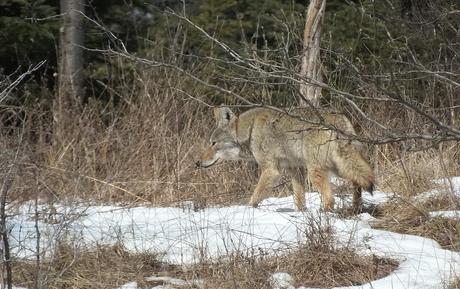
Coyotes have a rather grizzled appearance, with blackish, brownish, reddish and tawny patches of fur, and a creamy to white-coloured throat and chest. Coyotes are smaller than wolves.
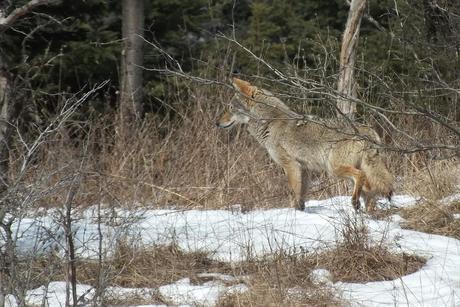
Eastern Coyotes are, for the most part, one and the same as coywolves. Apparently, in this same conservation area, people have seen one very large coyote that has a black coat. It would be much easier to spot in amongst the bare bushes, but we never came across it that day.

The camouflage provided by the coyote’s fur really emphasized how an animal can disappear right before your eyes.
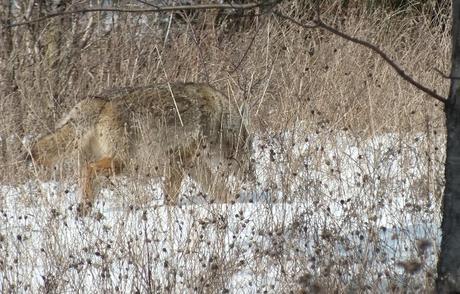
Unlike a wolf, a coyote has a bushy, thick tail, which it holds low to the ground, although, when running, coyotes keep their puffy tails held straight, angling them straight out or downward.
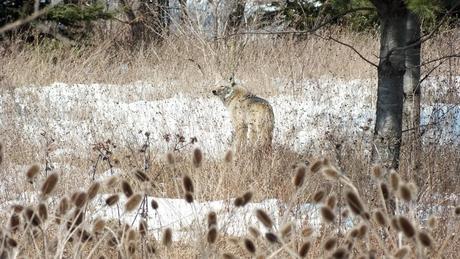
Coyotes feed mainly on smaller animals like mice and rabbits, even woodchucks and beavers, but they also will consume insects and fruit, and occasionally carrion. With the areas of wetland and forest in this conservation area, the coyotes would have a variety of animals to prey upon.
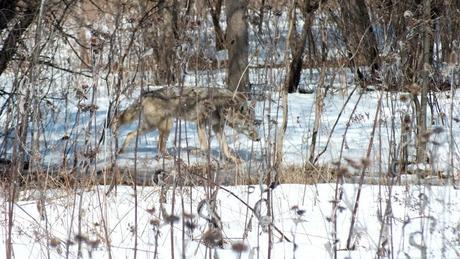
Coyotes often hunt in pairs and when together will prey on animals such as deer. Wolves, on the other hand, hunt in packs and take down mostly larger mammals like moose or deer. Judging by the abundance of deer tracks in the snow at the conservation area, I would imagine this population of coyotes has had ample food to eat over the course of the winter.
In this video that Bob filmed, the Coyote stopped in its tracks and took time to study us.

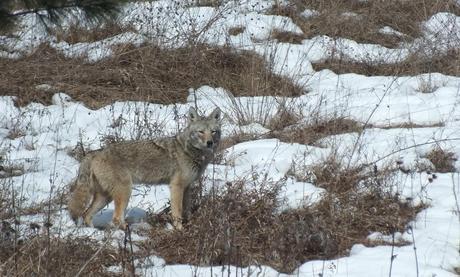
Certainly, this member of the coyote family had a thick, healthy-looking coat of fur.
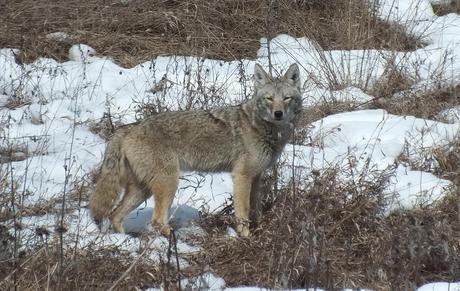
Coyotes have longer ears and a more pointed nose than wolves, and their legs are noticeably thinner and shorter.
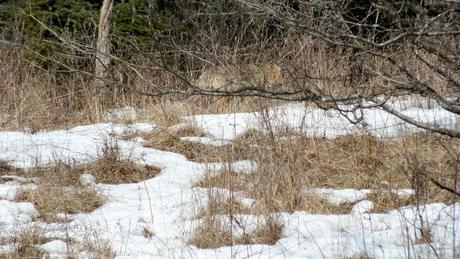
Bob and I tracked the coyote for about a half hour as it wove its way through long grass, under bare bushes and beneath evergreen boughs. As it finally melded into the underbrush, we remarked on the similarity to our experience in South Africa where a lion strolled almost unseen through the tall grass of the savannah in Kruger National Park.
Checkout some of our other wildlife sightings

Wild Beavers from the Green River to the Oxtongue River, Ontario
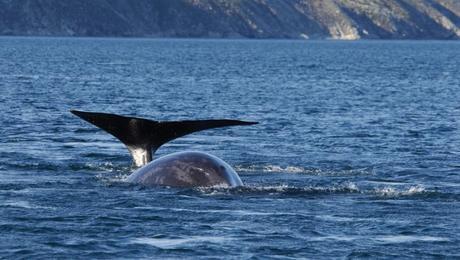
Arctic baby Bowhead Whale sighting
Frame To Frame – Bob & Jean
Wild Coyote Sighting in Claireville Conservation Area – Toronto – Ontario is a post from: Frame To Frame

